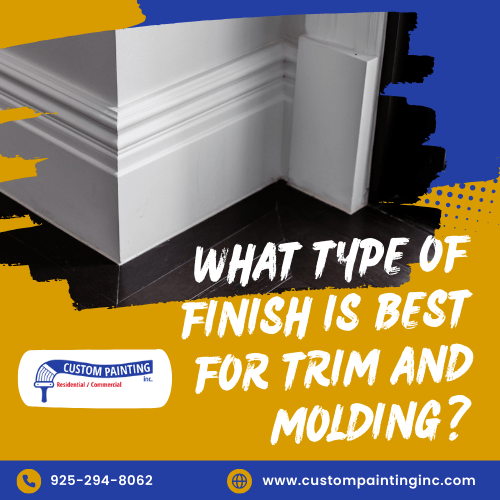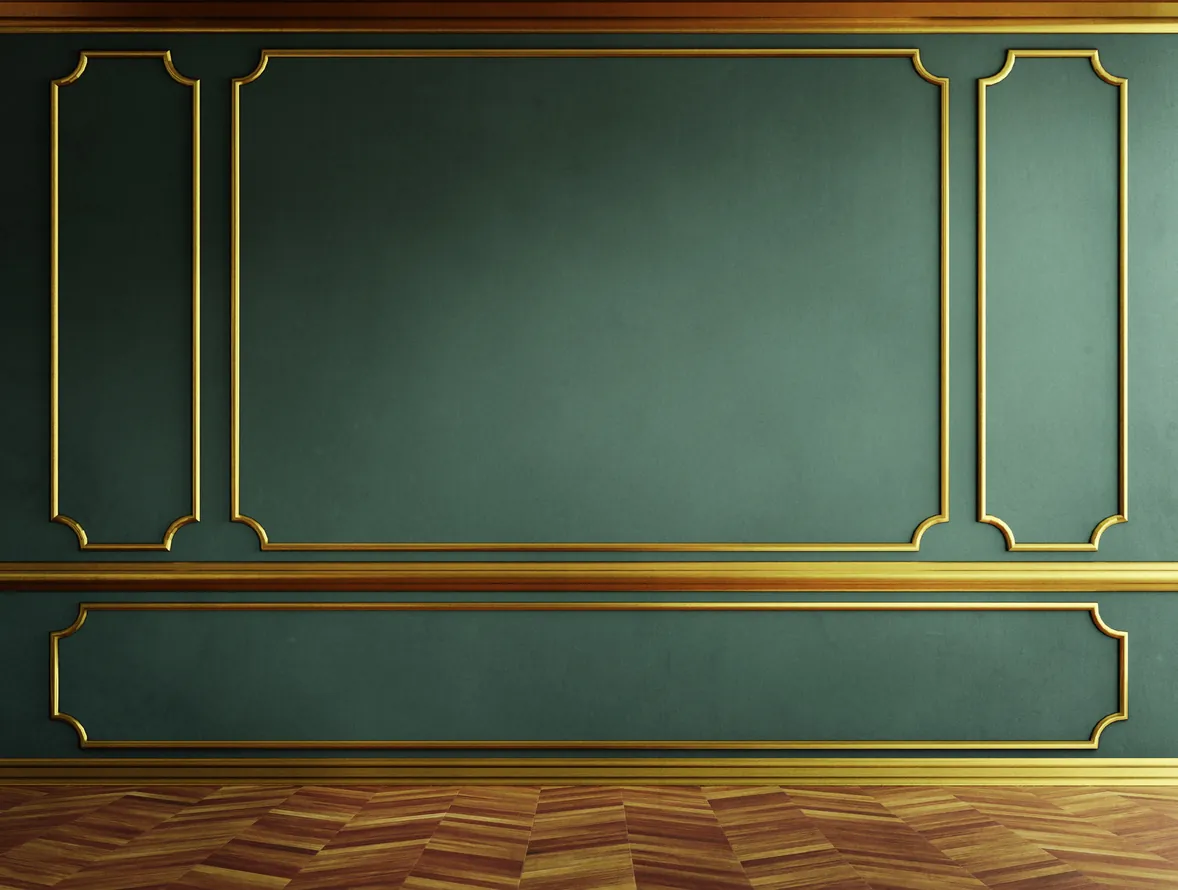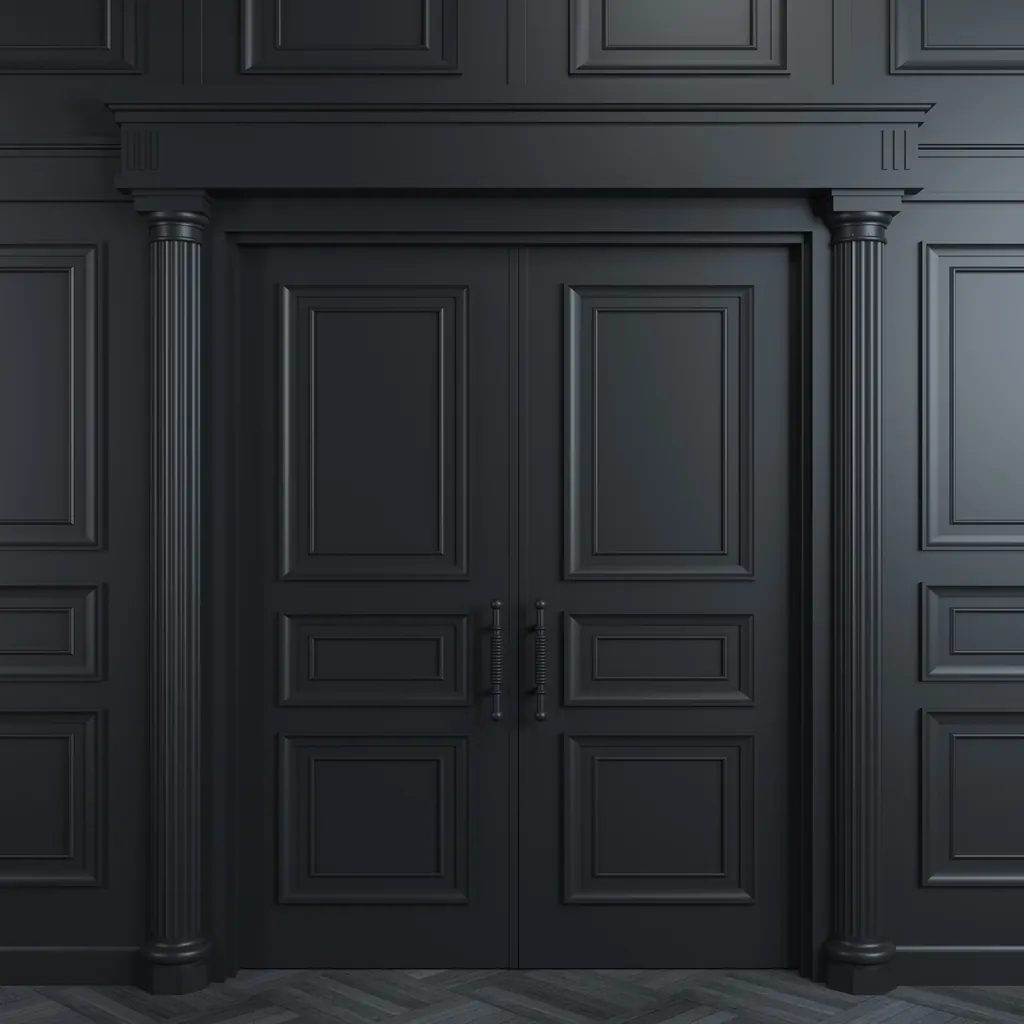Choosing the right finish for trim and molding is crucial because it affects these elements’ durability, appearance, and maintenance.
A higher-gloss finish, such as semi-gloss or gloss, is often preferred for trim and molding because it is more durable, resistant to scuffs, and easier to clean. The sheen also enhances the appearance by highlighting the architectural details and providing a subtle contrast against the walls.
Conversely, a lower sheen, like satin, offers a softer look but might require more upkeep due to its lower resistance to wear and staining.
Understanding paint finishes
Paint finishes overview
Matte (flat) finish:
- Characteristics: No sheen, absorbs light, provides a smooth, velvety appearance.
- Typical uses: It is ideal for low-traffic areas like ceilings or walls with imperfections, as it hides flaws well. However, it is not very durable and can be challenging to clean.
Eggshell finish:
- Characteristics: It has a slight sheen, resembling the surface of an eggshell. It has more luster than matte but is still fairly low-gloss.
- Typical uses: It is commonly used in living rooms, dining rooms, and bedrooms. Its balance of durability and subtle sheen make it easier to clean than matte.
Satin finish:
- Characteristics: Soft, pearl-like luster. It is slightly more reflective than eggshell, with a smooth finish.
- Typical uses: It’s popular in high-traffic areas like hallways, kitchens, and bathrooms. It’s durable and washable, making it suitable for spaces prone to moisture and dirt.
Semi-gloss finish:
- Characteristics: Noticeable shine and higher reflectivity. It’s durable, moisture-resistant, and easy to clean.
- Typical uses: It is often used for trim, doors, cabinets, and in kitchens and bathrooms. The sheen highlights architectural details but can reveal imperfections on the surface.
Gloss finish:
- Characteristics: Very high sheen, highly reflective. Provides a sleek, polished look.
- Typical uses: Ideal for high-impact surfaces like doors, trim, and furniture. It’s the most durable and washable finish but can emphasize surface flaws, so proper preparation is crucial.
High-gloss finishes
Benefits of using high-gloss finishes for trim and molding
- Durability: High-gloss finishes are known for their hard and resilient surface, making them more resistant to scratches, scuffs, and dents. This durability ensures that trim and molding can withstand the wear and tear of everyday life, maintaining their appearance for long periods.
- Easy cleaning: High-gloss finishes’ smooth, reflective surface makes them easier to clean. Dirt, dust, and fingerprints can be wiped off effortlessly, which is particularly useful in high-traffic areas or homes with children and pets.
- Enhanced appearance: High-gloss finishes highlight architectural details by reflecting light, making trim and molding stand out. It can add a touch of sophistication and elegance to a room.
Situations where a high-gloss finish is most appropriate
- High-traffic areas: High-gloss finishes are ideal for trimming and molding in hallways, entryways, and areas that experience a lot of foot traffic. This finish’s durability and easy maintenance make it well-suited for these spaces.
- Modern and contemporary interiors: High-gloss finishes complement modern and contemporary design styles by adding a sleek, polished look. They work well in spaces where a clean, sharp aesthetic is desired.
- Rooms with high moisture levels: In bathrooms and kitchens, where moisture and humidity are common, high-gloss finishes are a practical choice. They resist water better than other finishes and are easier to clean, helping to prevent mold and mildew growth on trim and molding.
- Spaces with limited natural light: High-gloss finishes can help brighten rooms with limited natural light by reflecting artificial light sources, making the space feel airier and more open.
Semi-gloss finishes
Advantages of semi-gloss finishes
- Semi-gloss finishes balance shine and ease of maintenance, making surfaces visually appealing and easy to clean. The subtle sheen highlights architectural details without being too reflective, and its durability makes it resistant to moisture and stains.
Ideal scenarios for choosing semi-gloss
- Semi-gloss is ideal for high-traffic areas, kitchens, bathrooms, and trim work where durability and ease of cleaning are essential. It’s also an excellent choice for areas that benefit from a bit of shine to enhance the overall look, like doors, cabinets, and molding.
Satin finishes
Satin finishes are known for their subtle sheen and smooth appearance, which lies between the flatness of matte and the glossiness of semi-gloss finishes. This creates a refined look that reflects light gently, giving surfaces a soft, elegant glow without being overly shiny. The smooth texture of a satin finish can enhance the depth of colors and provide a polished, sophisticated appearance.
Recommendations for using satin finishes
- Low-traffic areas: Satin finishes are ideal for low-traffic areas such as bedrooms, formal living rooms, and dining rooms, where the risk of scuffs and marks is minimal. The finish’s slight sheen makes it easier to clean than matte finishes, yet it doesn’t highlight imperfections as much as glossier options.
- For a softer look: For a softer, more muted aesthetic, satin finishes are perfect for creating a balanced, understated elegance. They work well on walls, woodwork, and even furniture where a subtle, smooth appearance is desired without the boldness of high gloss.
Comparing finishes for different rooms
Kitchens:
- Durability is crucial due to high traffic and moisture. For walls and cabinetry, opt for finishes like semi-gloss or satin, which are easy to clean and resistant to stains.
- Countertops: Choose durable materials like quartz or granite with a polished or honed finish for longevity and ease of maintenance.
- Floors: Consider materials like tile or hardwood with a water-resistant finish to handle spills and frequent cleaning.
Bathrooms:
- Moisture resistance is crucial. Use gloss or semi-gloss finishes for walls to prevent mold and mildew.
- Tiles: For walls and floors, select glazed ceramic or porcelain tiles due to their water resistance and effortless maintenance.
- Vanity tops: Choose water-resistant materials like quartz or cultured marble with a polished finish for easy cleaning.
Living rooms:
- Aesthetic and comfort take precedence. Matte or eggshell finishes work well for walls to create a cozy atmosphere while hiding imperfections.
- Flooring: Hardwood or carpet with a soft finish can enhance warmth and comfort, depending on the desired look and feel.
- Trim and moldings: A satin finish on baseboards and moldings offers a subtle contrast with matte walls and is durable enough to withstand bumps and scuffs.
Tips on matching trim and molding finish with wall and ceiling finishes
- Consistency: Keep the trim and molding finish consistent with the room’s style. For example, in modern spaces, use the same finish on trim as on the walls for a seamless look, while in traditional spaces, a slightly higher sheen on trim adds elegance.
- Contrast: A subtle contrast between trim and wall finishes can highlight architectural details. For instance, using satin or semi-gloss on trim against matte or eggshell walls can make the trim stand out without overpowering the room.
- Ceiling finish: Ceilings are typically painted in a flat or matte finish to avoid reflections and imperfections. If you want the trim to stand out, consider using a semi-gloss or satin finish on the trim and molding to contrast with the flat ceiling.
- Color matching: When painting the trim, the same color as the walls, use a different sheen to create dimension. A slightly glossier finish on the trim will make it subtly distinct while maintaining a cohesive look.
Conclusion
Choosing the right finish for trim and molding is essential as it affects the appearance and longevity of these elements. The finish impacts durability by providing a protective layer that can withstand wear and tear, making higher gloss finishes like semi-gloss or high-gloss ideal for areas prone to scuffs. These finishes are also easier to clean and maintain, keeping the trim looking fresh with minimal effort. In terms of appearance, the finish determines the sheen level, enhancing or subtly complementing the space’s appearance.
When selecting a finish, consider your specific needs and preferences to achieve the desired look and feel. For expert advice and high-quality service, contact Custom Painting, Inc. today. Call us at 925-294-8062 or message us via our contact form for free consultation and estimate.



